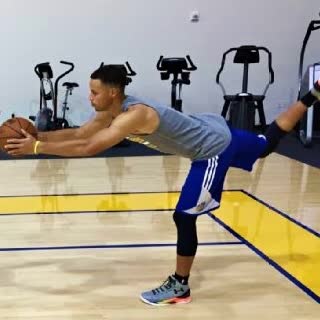What is the difference between Static, Active, Dynamic, and Functional stretching? Which type of stretching is better for you and how do they work?

With so many different types of stretching, it can be challenging to select the most beneficial. We will discuss four basic stretching styles which can be done independently. For all you fitness professionals out there, yes, we know there’s more, we’ll cover PNF (proprioceptive neuromuscular facilitation) another day.
Static Stretching
As the name suggests, static stretching involves holding a muscle at the stretched position for a period of 20-30 seconds. No significant benefit has been shown by holding the stretch for more than 30 seconds… but it sure does feel good.
Static stretching is best done after your workouts. This is because it (static stretching) has been shown to decrease strength and power due to the inhibitory response in the muscle fibers. The selected stretch position is held when you feel moderate tightness in the muscle, or slight discomfort. Breathing deeply throughout the stretch delivers oxygen to the muscles and facilitates release.
Active Stretching
Active stretching involves holding the stretched position with the opposing muscle group. Your muscles are playing an active role in holding the position. An example would be an inchworm, during which the contracted quadriceps, walk the legs forward to facilitate the active stretch in the opposing hamstrings.
Active stretching is best done before your workout as it helps to lengthen muscles that are typically tight, while actively engaging muscles that will be used during your workout. Due to the relatively short time under tension, (3-5 second is recommend) the muscle spindles don’t shut down such as when holding a static stretching.
Dynamic Stretching
Dynamic stretching is similar to active stretching. However, in dynamic stretching you don’t hold the stretch. The limbs are constantly moving through their natural available range of motion; think hip swings, or shoulder pendulums. Dynamic stretching is not the best for improving flexibility. However, it is a great way to warm up for your cardio workout or sport, and can help improve performance.
Functional Stretching
Functional Stretching is relatively new. Most strength coaches now lean towards functional stretching to improve flexibility in their athletes. Athletes mainly use free weights as opposed to machines due to the theory of specificity. This theory says that strength, coordination, speed, and balance is highly specific to the specific type of movement required for that particular sport.
Based on the same theory, if you want the newly gained ROM (range of motion) to show up in your movements and have the desired strength and coordination, the stretching should be functional or specific to your sport. Since most movements are standing, it makes a lot of sense to do lower body stretches standing on your feet.
Recent Comments